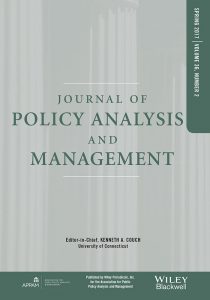Telling the Truth: Immigrants and their communities
 Today, December 2, Maryland pastor Lennox Abrigo will be at the White House to discuss immigration reform. According to the New York Times, Abrigo and other pastors across the state have witnessed increases in the number of immigrants in their congregations as well as increases in the problems that these individuals face. Abrigo told the paper, “Members of our church have been deported… Families are disrupted.” Despite such challenges, the Times reports that immigration reform activism is on the rise Activists are working hard to fight stereotype and misconception.
Today, December 2, Maryland pastor Lennox Abrigo will be at the White House to discuss immigration reform. According to the New York Times, Abrigo and other pastors across the state have witnessed increases in the number of immigrants in their congregations as well as increases in the problems that these individuals face. Abrigo told the paper, “Members of our church have been deported… Families are disrupted.” Despite such challenges, the Times reports that immigration reform activism is on the rise Activists are working hard to fight stereotype and misconception.
To begin with, reformers are expanding their base. Because the majority of immigrants in the United States are coming from Mexico and Latin America, the fight is led largely by Latinos. According to Washington NAACP bureau director Hillary Shelton, “The immigration debate needs to have, in addition to a Latino face, it needs to have a Haitian face. It needs to have an Asian face.”
Identity is not the only misconception that immigrants face. Their communities are often perceived as havens for crime. A recent study by Schott A. Desmond and Cheris E. Kurbin, published in the Sociological Quarterly, goes a long way in refuting this theory. In their article, The Power of Place: Immigrant Communities and Adolescent Violence, Desmond and Kurbin examine the relationship between immigrant concentration and adolescent violence. The two use statistical analysis to confront the “immigrant paradox” -“the counterintuitive finding that immigrants have better adaptation outcomes than their national peers despite their poorest socioeconomic conditions.” The findings of the study indicate that immigrant concentration is negatively related to adolescent violence.
The supposition of increased violence is based on the premise that immigrant communities are often low-income and fewer economic opportunities can be linked to increased crime rates. However, the face of evidence to the contrary, the authors examine possible explanations of the supposed phenomena. These theories include, cultural preservation, social ties, networks, and informal social control, as well as employment and ethnic entrepreneurship. It is also carefully noted that the article is not advocating the segregation of communities based on ethnicity. Rather, social scientists should embark on further research and apply the lessons of immigrant communities to areas where adolescent delinquency is a problem.
![]() Read the article in the New York Times
Read the article in the New York Times
![]() Read “The Power of Place: Immigrant Communities and Adolescent Violence” by Schott A. Desmond and Cheris E. Kurbin
Read “The Power of Place: Immigrant Communities and Adolescent Violence” by Schott A. Desmond and Cheris E. Kurbin

















1540-6237/asset/SSSA_Logo-RGB.jpg?v=1&s=c337bd297fd542da89c4e342754f2e91c5d6302e)

I wonder if positive images such as the one identified by Desmond and Kubrin are also faces that the immigrant movement should adopt? The communities’ ability to maintain lower rates of juvenile delinquency–in spite of risk factors that would suggest otherwise–ought to be a very compelling story.
Keri